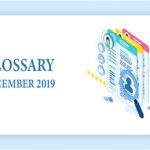Code Current
The ability to install, implement, and successfully get the latest version of software to work.
Source: LogiGear
Continuous Delivery
The ability to get changes of all types—including new features, configuration changes, bug fixes and experiments—into production, or into the hands of users, safely and quickly in a sustainable way.
Source: Continuous Delivery
DevOps
(Term derived from the words “Development” and “Operations”) A software development practice, grounded in agile philosophy, that emphasizes close collaboration between an organization’s software developers and other IT professionals, while automating the process of software delivery and infrastructure changes. It aims at establishing a culture and organizational workflow in which building, testing, and releasing software happens rapidly, frequently, and more reliably.
Source: Wikipedia
Oracle Applications Testing
A comprehensive, integrated testing solution for Web applications, Web Services, packaged Oracle Applications and Oracle Databases.
Source: Wikipedia
Enterprise Resource Planning (ERP)
The core processes that are needed to run a company: finance, HR, manufacturing, supply chain, services, procurement, and others. ERP integrates these processes into a single system.
Source: SAP
Test Folders
The Tests node is the repository for your test modules. For purposes of organizing your tests, this folder can be further organized into subfolders to hold your test modules. This is helpful for projects with a multitude of test modules, and in which commonalities exist amongst groups of modules.
Source: TestArchitect
Test Modules
The test module is the work file in which you create tests. Its essence is to contain a group of test cases with a similar, and if possible narrowly-defined, scope. A TestArchitect project is typically comprised of multiple test modules, which are often grouped into folders and subfolders of the project. Test modules should be designed to run independently from each other, while the test cases within a test module can have dependencies among themselves. Within a test module, all actions, especially the family of check actions, should directly relate to the defined scope of the test module. This way it is easy to keep abreast of large tests, and functional changes to a system under test need only have a localized effect on the test suite – that is, only the relevant test modules are affected. The test module contains objectives and test cases. The objectives are an auxiliary device to further refine the scope of the test module. They allow a reader to understand why test cases are designed the way they are, and give an auditor a quick insight into the correctness and, more importantly, completeness of a test.
Source: TestArchitect
User-Defined Fields
In addition to its contents, every project item in TestArchitect has various metadata associated with it. Such fields as Name, Assigned user, Description and Creation date can be viewed by opening a given item and clicking on its Information tab. In addition to these predefined fields, TestArchitect allows you to create your own custom fields for project items, to use in accordance with your requirements. A user-defined field enables you to store additional information for project items. Furthermore, user-defined fields can be useful in integrating your project with external tools, such as HP Quality Center. You can often enhance the utility of an external tool with custom fields that allow more data to be exchanged between the tool and your project items.
Source:TestArchitect


















